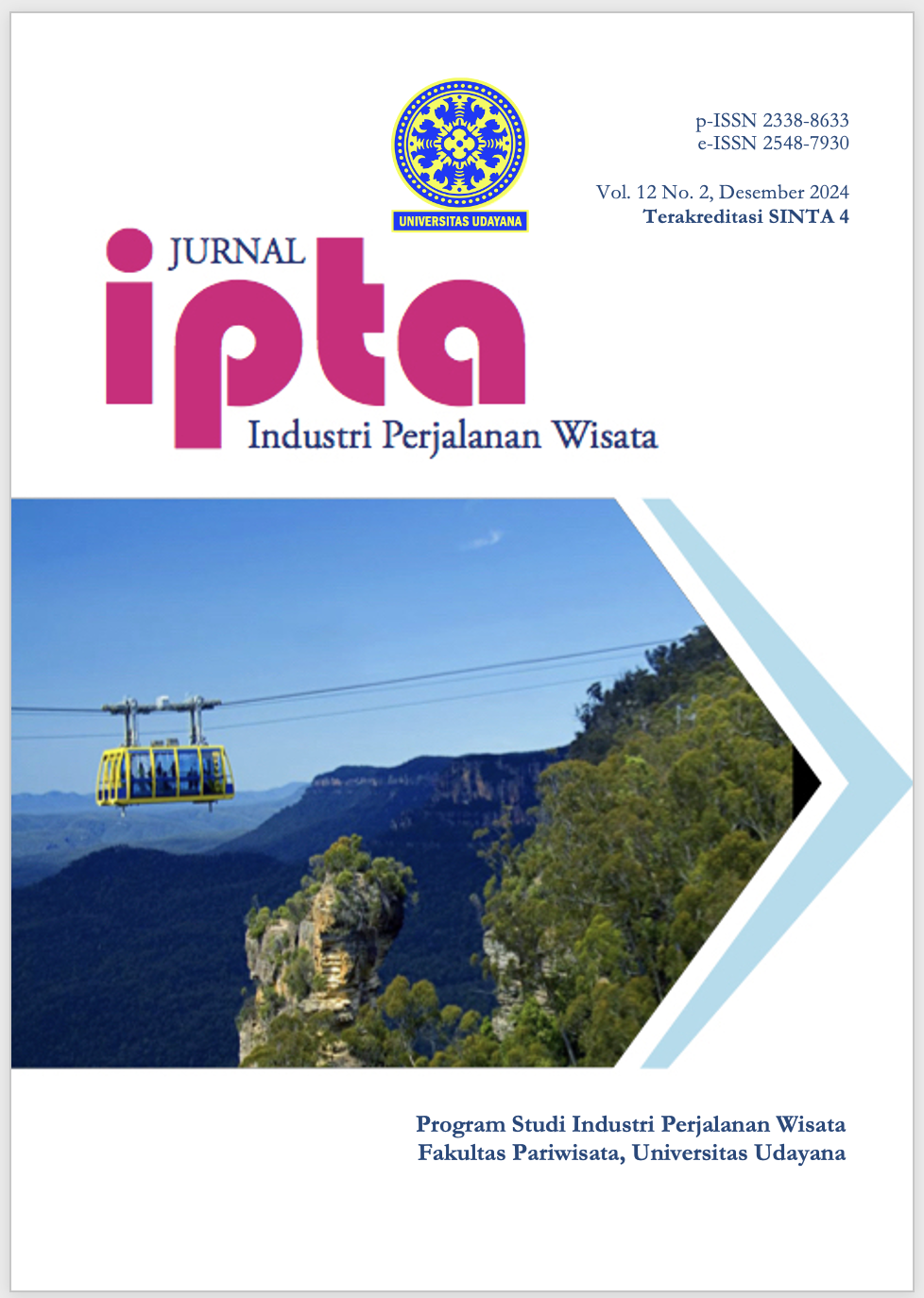ANALISIS SEGMENTASI WISATAWAN STAYCATION DI BALI
Abstract
Staycation is a trend in Bali as an alternative to traveling during the pandemic. Using demographic, geographic, behavioral, and psychographic segmentation analysis, this study aims to identify the market segment of tourists staying in Bali. The method used in this research is quantitative, data collected through distributing questionnaires to 180 respondents. This research uses psychographic segmentation variables concentrating on the lifestyle (Plummer, 1974) model of activities, interests, and opinions (AIO) consisting of 27 indicators. The data analysis techniques used were factor analysis, clustering, discriminant and cross tabulation to examine relationships with other segmentation variables, such as demographics, geography, and behavior using the SPSS v.25 application. The results found that there are 3 (three) clusters formed: (1) Family Enthusiast staycationer, is a segment that really likes relaxing and comfortable activities and is done with family so they like accommodations that provide complete facilities (in- house services). (2) Lifestyle Sociable staycationers, this segment likes activities to gather with friends and relatives. (3) Nature local Explorer who is interested in new things, interest in Nature, Culture and local cuisine related to personal achievement. This segmentation is expected to be a guideline for preparing staycation promotion/activity strategies for accommodation managers.





